- Home
- Simon Winchester
Krakatoa: The Day the World Exploded
Krakatoa: The Day the World Exploded Read online
PENGUIN BOOKS
KRAKATOA
Simon Winchester was born and educated in England, has lived in Africa, Ireland, India and China, and now lives in the Berkshire hills of western Massachusetts. Having reported from almost everywhere during more than thirty years as a foreign correspondent, he now contributes to a variety of American and British magazines and newspapers, and is the author of many highly acclaimed works of non-fiction. His most recent books have been the two international bestsellers The Surgeon of Crowthorne and The Map That Changed the World.
KRAKATOA
THE DAY THE WORLD EXPLODED
27 AUGUST 1883
SIMON WINCHESTER
PENGUIN BOOKS
PENGUIN BOOKS
Published by the Penguin Group
Penguin Books Ltd, 80 Strand, London WC2R 0RL, England
Penguin Group (USA) Inc., 375 Hudson Street, New York, New York 10014, USA
Penguin Books Australia Ltd, 250 Camberwell Road, Camberwell, Victoria 3124, Australia
Penguin Books Canada Ltd, 10 Alcorn Avenue, Toronto, Ontario, Canada M4V 3B2
Penguin Books India (P) Ltd, 11 Community Centre, Panchsheel Park, New Delhi – 110 017, India
Penguin Books (NZ) Ltd, Cnr Rosedale and Airborne Roads, Albany, Auckland, New Zealand
Penguin Books (South Africa) (Pty) Ltd, 24 Sturdee Avenue, Rosebank 2196, South Africa
Penguin Books Ltd, Registered Offices: 80 Strand, London WC2R 0RL England
www.penguin.com
Published by Viking 2003
Published in Penguin 2004
17
Copyright © Simon Winchester, 2003
Chapter heading and other hand-drawn illustrations © Soun Vannithone, 2003
All rights reserved
The moral right of the author has been asserted
The publisher is grateful for permission to reproduce the following extracts:
‘For the Time Being’ by W. H. Auden, courtesy of Faber and Faber Ltd;
‘Jakarta 1’ from the album Camellia 1 by Ebiet G. Ade, copyright © Jackson Records, 1979
Except in the United States of America, this book is sold subject to the condition that it shall not, by way of trade or otherwise, be lent, re-sold, hired out, or otherwise circulated without the publisher's prior consent in any form of binding or cover other than that in which it is published and without a similar condition including this condition being imposed on the subsequent purchaser
ISBN: 978-0-14-192623-0
I dedicate this book,
with pleasure and with thanks,
to my mother and father
At any given instant
All solids dissolve, no wheels revolve,
And facts have no endurance –
And who knows if it is by design or pure inadvertence
That the Present destroys its inherited self-importance?
from ‘For the Time Being’, W. H. Auden
CONTENTS
List of Illustrations and Maps
Maps
Prelude
1 ‘An Island with a Pointed Mountain’
2 The Crocodile in the Canal
3 Close Encounters on the Wallace Line
4 The Moments When the Mountain Moved
5 The Unchaining of the Gates of Hell
6 A League from the Last of the Sun
7 The Curious Case of the Terrified Elephant
8 The Paroxysm, the Flood and the Crack of Doom
9 Rebellion of a Ruined People
10 The Rising of the Son
Epilogue: The Place the World Exploded
Recommendations for (and in One Case, against) Further Reading and Viewing
Acknowledgements, Erkenningen, Terima Kasih
Illustration Acknowledgements
Index
LIST OF ILLUSTRATIONS AND MAPS
Endpapers: Frederic Edwin Church's Sunset over the Ice on Chaumont Bay, Lake Ontario
(p. xiv) Map of South-East Asia
(p. xv) Map of South-East Asia, with the western islands of the immense archipelago of what is now Indonesia
(p. xvi) Map of the islands of the Krakatoa group before the 1883 eruption
(p. 11) Syzygium aromaticum, the clove
(p. 11) Nutmeg and mace
(p. 12) Piper nigrum, pepper
(p. 14) The Tordesillas Line
(p. 26) Jan Huyghen van Linschoten's 1595 map of the Far East
(p. 33) Jan Pieterszoon Coen
(p. 38) Vereenigde Oost-Indische Compagnie logo
(p. 43) A milliner weaving topis and bonnets from alang-alang grass
(p. 56) Alfred Russel Wallace
(p. 61) Charles Darwin
(p. 65) The Wallace Line
(p. 71) Alfred Lothar Wegener
(p. 74) Pangaea beginning its division into Laurasia and Gondwanaland
(p. 81) Greenland
(p. 85) A crystal of magnetite
(p. 91) The process of convection inside the earth's mantle (p. 94) The magnetic ‘zebra stripes’ discovered on the seabed of the north-western Pacific in 1955
(p. 106) J. Tuzo Wilson's famous transform fault structure
(p. 111) A subduction zone
(p. 120) The presumed geological evolution of the Krakatoa islands
(p. 122) John Webber's drawing of the jungle of the Krakatoa island
(p. 140) Jan van Schley's etching Het Brandende Eiland, showing two caravels passing Krakatoa in full eruption in 1680
(p. 145) A Jakarta city scene, around 1865
(p. 149) Frederik ‘s Jacob, governor-general of the East Indies in 1880
(p. 170) Rogier Verbeek
(p. 177) Captain H. J. G. Ferzenaar's map of Krakatoa, the last map ever made
(p. 188) The Agamemnon laying the first transatlantic telegraph cable
(p. 192) Map of the worldwide network of telegraph connections used by Reuter's agency
(p. 193) Samuel Morse
(p. 201) Advertisement for Anna Wilson's Circus
(p. 203) The grand ballroom of Jakarta's Concordia Military Club
(p. 218) Pressure wave from Krakatoa's final explosion, measured at the Jakarta Gasworks
(p. 225) Hevea brasiliensis, Brazilian rubber
(p. 231) The Royal Dutch Navy's armed paddle-steamer Berouw
(p. 236) Consul Cameron's Krakatoa dispatch to Lord Granville
(p. 240) Admiralty charts showing the islands of Krakatoa before and after the 1883 disaster
(p. 246) A tsunami generated by only the most moderate of earthquakes on Krakatoa
(p. 252) The tide-meter at Jakarta registers a sudden swell at 12.36 p.m.
(p. 256) The Berouw, stranded a mile and a half up the Koeripan River
(p. 274) Map showing where the sound of the explosion could be heard
(p. 280) Tide-gauge trace from Socoa, France
(p. 299) Rafts of pumice, with the remains of victims
(pp. 310–11) The world and its pattern of tectonic plates
(p. 318) The subduction process
(p. 320) The basic tectonic structure of the Krakatoa region
(p. 330) The title page of Max Havelaar, published in 1860
(p. 336) A Javanese imam
(p. 349) A current official Royal Navy depiction of Anakrakata
(p. 351) Anak Krakatoa shown in 1979
(p. 357) Nephila maculata, a ballooning spider
(p. 358) Life returns to the Krakatoa beaches
(p. 370) A thick coastal casuarina forest on Sertung island
(p. 385) Aerial photographs of Anak Krakatoa and Surtsey, off Iceland
(p. 390) Varanus salvator, the five-banded swi
mming monitor lizard
South-East Asia, with the western islands of the immense archipelago of what is now Indonesia, formerly the Dutch East Indies.
The islands of the Krakatoa group, as known before the 1883 eruption.
PRELUDE
He also had one volcano that was extinct. But, as he said, ‘One never knows!’ So he cleaned out the extinct volcano, too. If they are well cleaned out, volcanoes burn slowly and steadily, without any eruptions. Volcanic eruptions are like fires in a chimney.
On our earth we are much too small to clean out our volcanoes. That is why they bring no end of trouble upon us.
– from The Little Prince by Antoine de Saint-Exupéry, 1944
It was early on a warm summer's evening in the 1970s, as I stood in a palm plantation high on a green hillside in western Java, that I saw for the first time, silhouetted against the faint blue hills of faraway Sumatra, the small gathering of islands that is all that remains of what was once a mountain called Krakatoa.
There was a high peak to the left of the group, its pyramid shape cut off sharply by its vertical northern cliff. A couple of low islands hugged the horizon to the right. In between them was one small and perfectly formed, absolutely symmetrical low cone, from which rose a thin wisp of smoke. The smoke left a blackish, greyish trail that first rose vertically and then, as it caught the trade winds a few hundred feet above the darkening surface of the sea, was whisked off to the left, melting away until it became no more than a slow-fading stain against the salmon glow of the sunset.
I must have stood there, enraptured, until it got quite dark. And then I turned away for the drive back to Jakarta. This, I remembered thinking during the endless night of the flight back west, had been a scene of impeccable beauty. And all the more so because it presented a distant prospect of a place where the processes of the world were at work, a place of elemental significance, and a disastrous place once – but these days quiet again, serenely biding its time.
It was almost another quarter of a century before I found myself back in Java. Most of the work I was doing now kept me in the island's centre, in towns like Jogjakarta and Solo and Semarang. But just before I was due to fly away, and because I had a free evening until my plane left, I decided on a whim to make my way back across to the western edge of the island. I drove down to the coast road, just as I had in the seventies.
I wanted to go back for no other reason than to take what I thought would be one final look at a place that, though few beyond the East Indies knew exactly where it was or what it looked like or just what had happened there, had a name – Krakatoa – that had for decades been firmly annealed into the world's collective consciousness. There was a famous film (which admittedly placed the island on the wrong side, the east side, of Java). There was a much loved children's book (which admittedly placed the island in a different ocean, the Pacific, rather than in the Indian). The name had become part of the world's cultural lexicon – it had a vaguely exotic familiarity about it, a certain indefinable resonance. It was a word that people seemed to like, both to say and to have said to them. And now here I was, so close to the volcano that the chance of seeing it once more seemed an opportunity that I shouldn't pass up.
When I reached the best viewpoint on the corniche, it was evening, perhaps a little later than before, and so rather darker than when I had been there last. This time the enormous iron lighthouse near the port of Anjer – built by the Dutch to replace the one that had been torn away in the terrible waves caused by the great eruption – was sweeping its beam calmly across the unruffled waters of the Sunda Strait, beginning its night on sentry-go.
The group of islands was there, just as before, now black against the vivid deep pinks of the western sky. The giant peak to the left of the group was just as I remembered; the low islands too, this time merging with the evening clouds. And in the middle of them all, its summit seemingly lipped with a curious orange fire, rose the pyramid-shape of the one active remnant of the great disaster. As I looked through my glasses, I could clearly see that the orange was indeed fire, and that from it rose smoke, just as before, only this time a tumble of black billows that towered straight up into the windless late-evening sky.
But there was one obvious difference. The pyramid – which I now knew to be called Anak locally, which is Malay for the child of what had once existed there before the great eruption – seemed this time somehow bigger, sturdier, much taller than I had remembered.
I blinked hard, looked again. I measured it as best I could against the big peak to the left – trying to recall where the smaller mountain had stood in relation to that cliff wall. It was higher up now, surely. Yes, there was no doubt. Memory does play tricks in situations like this, to be sure: but, as I stared long and hard, I became ever more certain. The volcano, the child of Krakatoa, had grown very much larger during the twenty-five years that I had been away.
*
When I got back to the maps, I checked, and could see in short order that the modern surveys all agreed. The small island-mountain, which had been born out of the sea forty-odd years after the very explosion that destroyed and vaporized its parent, was now itself growing fast, thrusting upwards at an extraordinary rate. By looking at the old charts and maps that had been published down the years since the last week of June 1927, when it was first seen above the waves, it was possible to calculate that it had been growing taller, fairly steadily, at an average rate of about five inches a week.
True, there had been some fits and starts – a lava flow here, a wild eruption there – but generally Anak Krakatoa had enlarged itself by twenty or so inches each month since 1927. Every year since its birth it had become higher by twenty feet, and somewhere near forty feet wider. And if this was indeed still so – I checked my figures once again – then it meant that my mountain was not simply taller: it was fully five hundred feet taller than when I had last seen it.
Which is why this sturdy stripling of a volcano has captivated me ever since. It is a volcano that absolutely and very visibly refuses to die. It is a volcano that seems to me to possess a wonderfully seductive combination of qualities, being beautiful and dangerous, unpredictable and unforgettable. And more: though what happened in its former life was unutterably dreadful, the realities of geology and seismicity and the peculiar tectonics of Java and Sumatra will make sure that what occurred back then will without a doubt one day repeat itself, and in precisely the same way.
No one can be sure exactly when. Probably it will be very many years – many years, that is, before anything will befall the world that could possibly be as terrible as what took place during the historic paroxysmal moment that reached its extraordinary climax at exactly two minutes past ten on the morning of Monday, 27 August 1883.
*
The explosion itself was terrific, a monstrous thing that still attracts an endless procession of superlatives. It was the greatest detonation, the loudest sound, the most devastating volcanic event in modern recorded human history, and it killed more than 36,000 people.
Geological evidence from around the world admits of a number of bigger and more devastating volcanoes, true. Krakatoa is reckoned today to be only the fifth most explosive in the planet's certain geological history – Mounts Toba and Tambora in the East Indies, Taupo in New Zealand and Katmai in Alaska are all thought to have been very much larger, at least in terms of the amount of material they hurled into the sky and the height to which all that material is thought to have soared.
But these were all eruptions quite lost to antiquity, with rather little direct effect on human society. When Krakatoa exploded it was 1883, and the world was a profoundly different place. Sophisticated human beings were on hand to see this volcano's convulsions, they were able to investigate the event, and they were able to attempt to understand the processes that had caused such dreadful violence. And yet, as it happens, their observations, painstaking and precise as science demanded, collided head on with a most discomfiting reality: that whil
e in 1883 the world was becoming ever more scientifically advanced, it was in part because of these same advances that its people found themselves in a strangely febrile and delicately balanced condition, which an event like Krakatoa did much to unsettle.
The communications technology of the time, for example – the advances of telegraphy, the building of undersea cables, the flourishing of news agencies – ensured that the world's more advanced peoples learned about the eruption within moments of its happening. But at the time the limited, and only slowly unfolding, geological knowledge then to hand did not give the audience an explanation of the events that was sufficient to soothe their fears about all they were learning. Hearing of the event baffled people thousands of miles away from where it happened, and left faraway populations bewildered and, in some cases, more than a little frightened.
Moreover, religious dogma still held a powerful grip on millions, even in societies whose scientific understanding was advancing so rapidly. Tribal ancestors might have explained away an eruption like Krakatoa's: it was simply a matter of the gods being angry. But the luxury of such a facile explanation was not available to the more modern people of 1883, whose growing sophistication meant they both knew so much about an event like this and yet at the same time actually knew so little. They had sufficient knowledge of the facts – the news agencies saw to that – but it was knowledge coupled with an insufficiency of understanding. Many people worried in consequence that the eruption of Krakatoa meant something infinitely more dreadful than it did: that their world was being torn asunder, and perhaps even, as the Bible had foretold, was coming to an end.
Fretful and fascinated people around the world, in cities as distant from Java and from each other as Boston and Bombay and Brisbane, all came to know of the event in an instant – and they did so quite simply because this was the world's first major catastrophe to have taken place in the aftermath of the invention of the submarine telegraph. The newspapers were full of it, the descriptions of the happenings made all the more enthralling because they were so perfectly up to date. Words and phrases that had hitherto been utterly unfamiliar – Java, Sumatra, the Sunda Strait, Batavia – became in one mighty flash of eruptive light part of the common currency of all.

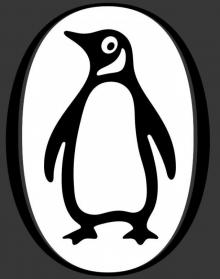 The Surgeon of Crowthorne
The Surgeon of Crowthorne Korea: A Walk Through the Land of Miracles
Korea: A Walk Through the Land of Miracles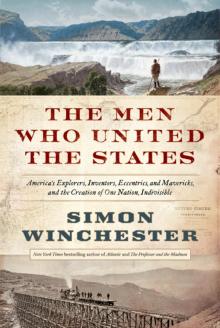 The Men Who United the States: America's Explorers
The Men Who United the States: America's Explorers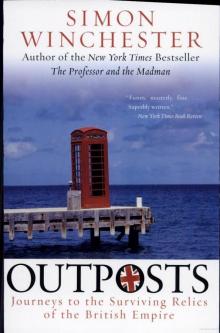 Outposts: Journeys to the Surviving Relics of the British Empire
Outposts: Journeys to the Surviving Relics of the British Empire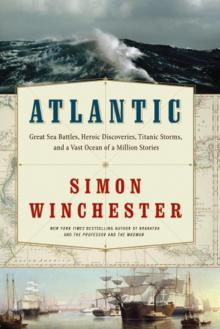 Atlantic: Great Sea Battles, Heroic Discoveries, Titanic Storms
Atlantic: Great Sea Battles, Heroic Discoveries, Titanic Storms The Professor and the Madman: A Tale of Murder, Insanity
The Professor and the Madman: A Tale of Murder, Insanity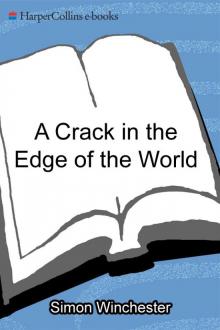 A Crack in the Edge of the World
A Crack in the Edge of the World The Perfectionists: How Precision Engineers Created the Modern World
The Perfectionists: How Precision Engineers Created the Modern World The Man Who Loved China: The Fantastic Story of the Eccentric Scientist
The Man Who Loved China: The Fantastic Story of the Eccentric Scientist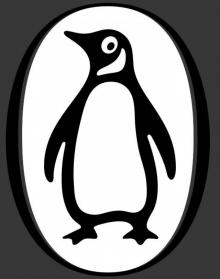 The River at the Center of the World: A Journey Up the Yangtze
The River at the Center of the World: A Journey Up the Yangtze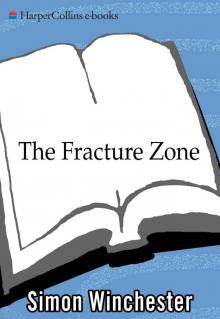 The Fracture Zone: My Return to the Balkans
The Fracture Zone: My Return to the Balkans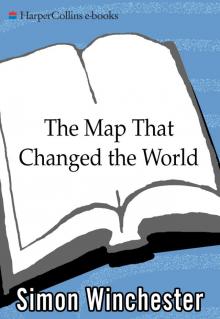 The Map That Changed the World
The Map That Changed the World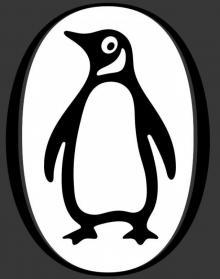 Krakatoa: The Day the World Exploded
Krakatoa: The Day the World Exploded The Man Who Loved China
The Man Who Loved China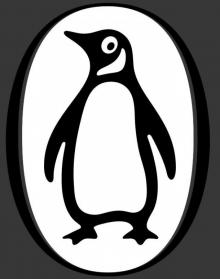 The River at the Centre of the World
The River at the Centre of the World Bomb, Book and Compass
Bomb, Book and Compass The Perfectionists
The Perfectionists The Meaning of Everything
The Meaning of Everything Exactly
Exactly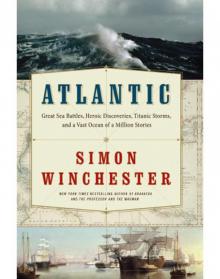 Atlantic
Atlantic Korea
Korea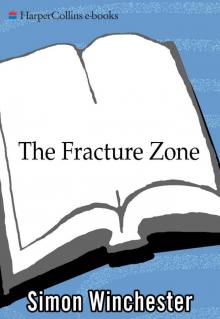 The Fracture Zone
The Fracture Zone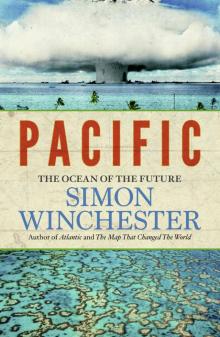 Pacific
Pacific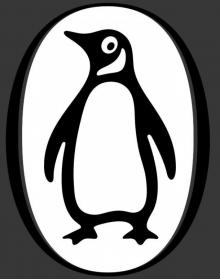 Krakatoa
Krakatoa The Professor and the Madman
The Professor and the Madman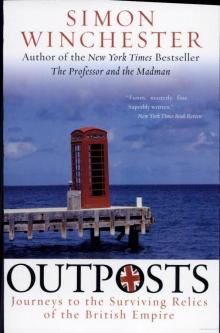 Outposts
Outposts